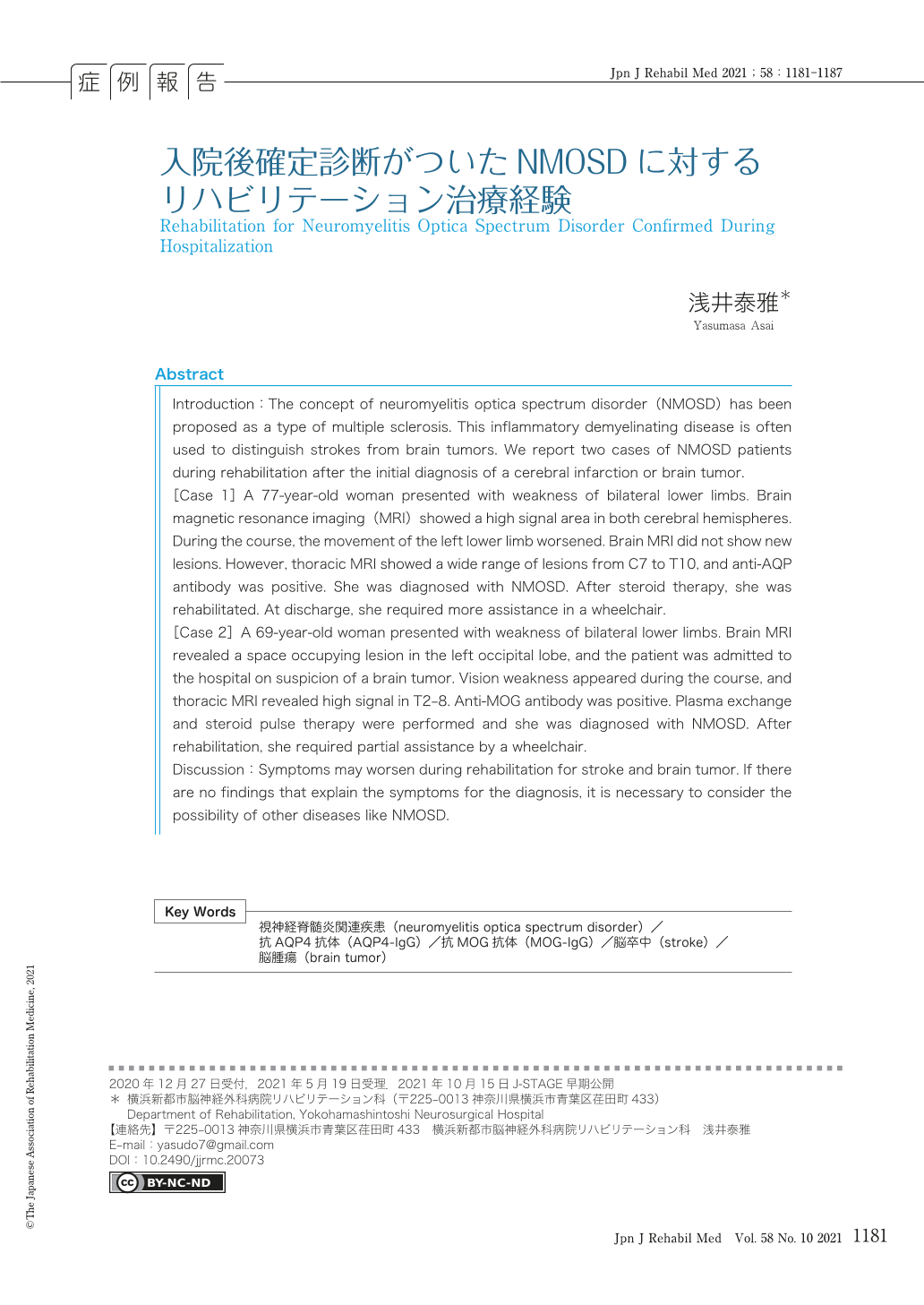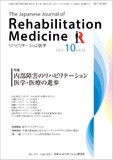Japanese
English
- 販売していません
- Abstract 文献概要
- 1ページ目 Look Inside
- 参考文献 Reference
はじめに
多発性硬化症(multiple sclerosis:MS)の一病型として,抗アクアポリン4(aquaporin4:AQP4)抗体陽性を特徴とする視神経脊髄炎(neuromyelitis optica:NMO)が知られている.2015年の国際診断基準の改変により,視神経脊髄炎関連疾患(neuromyelitis optica spectrum disorder:NMOSD)の概念が提唱された1, 2).また,その中にはAQP4-IgGが陰性であり,髄鞘の外表面に存在する中枢神経系に特異的な抗原蛋白(myelin oligodendrocyte glycoprotein:MOG)に対する抗体(MOG-IgG)が陽性を呈する疾患群も報告されている3, 4).これらの中枢神経系の炎症性脱髄性疾患は,しばしば脳卒中や脳腫瘍の鑑別として挙がる.一相性の場合は鑑別が難しく,再発を繰り返す過程で確定診断に至ることもある.
今回,われわれは当初脳梗塞あるいは脳腫瘍と診断されていたが,経過よりNMOSDと診断した2症例に対してリハビリテーション治療を施行したので報告する.
Introduction:The concept of neuromyelitis optica spectrum disorder (NMOSD) has been proposed as a type of multiple sclerosis. This inflammatory demyelinating disease is often used to distinguish strokes from brain tumors. We report two cases of NMOSD patients during rehabilitation after the initial diagnosis of a cerebral infarction or brain tumor.
[Case 1] A 77-year-old woman presented with weakness of bilateral lower limbs. Brain magnetic resonance imaging (MRI) showed a high signal area in both cerebral hemispheres. During the course, the movement of the left lower limb worsened. Brain MRI did not show new lesions. However, thoracic MRI showed a wide range of lesions from C7 to T10, and anti-AQP antibody was positive. She was diagnosed with NMOSD. After steroid therapy, she was rehabilitated. At discharge, she required more assistance in a wheelchair.
[Case 2] A 69-year-old woman presented with weakness of bilateral lower limbs. Brain MRI revealed a space occupying lesion in the left occipital lobe, and the patient was admitted to the hospital on suspicion of a brain tumor. Vision weakness appeared during the course, and thoracic MRI revealed high signal in T2-8. Anti-MOG antibody was positive. Plasma exchange and steroid pulse therapy were performed and she was diagnosed with NMOSD. After rehabilitation, she required partial assistance by a wheelchair.
Discussion:Symptoms may worsen during rehabilitation for stroke and brain tumor. If there are no findings that explain the symptoms for the diagnosis, it is necessary to consider the possibility of other diseases like NMOSD.

Copyright © 2021, The Japanese Association of Rehabilitation Medicine. All rights reserved.


